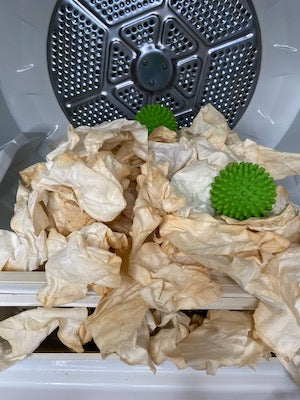Note: No wipes were flushed in the writing of this blog post.
For an art project, we needed to dye flushable wipes a special color. But they're meant to decompose, right, so wouldn't the liquid dye cause them to decompose before we could complete the project?
Oh, the things we endure for our art...
We mixed up the dye color, separated a package of wipes into individual sheets in a bucket, and poured in the die until the wipes were covered. After a minute of soaking, we drained the water. To our non-surprise, the wipes held their form. No degrading.
Then we squeezed out the excess water. To our non-surprise, the wipes held their form. No degrading.
Then we put them into the clothes dryer! Ran that sucker on normal heat with a couple of dryer balls inside to tumble them around. We were worried that a pulpy mess would coat the dryer drum. What do you think we found?
When the buzzer buzzed to indicate the contents were dry, we looked inside. To our non-surprise, the wipes held their form. No degrading. No shedding of fibers. Not even a single tear in the fabric. In fact, they looked like the original wipes, except colored and dry.
So let's review. 'Flushable' wipes were separated, soaked, wrung out, and tumble-dried ... and they looked no worse than when we started. Yet we're to believe these things magically decompose in our plumbing and don't cause a billion dollars of damage each year?


